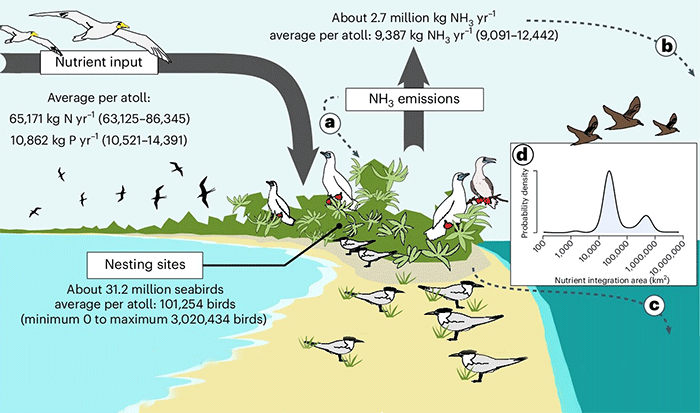Pacific atolls more important for seabirds than previously thought

A team of marine and avian biologists from the University of Auckland, the Karolinska Institute, the Nature Conservancy and the University of California has conducted a large-scale survey of birds nesting on Indo-Pacific atolls.
Their paper is published in Nature Ecology and Evolution. Ruth Dunn, with Heriot-Watt University, has published a News & Views article in the same journal issue outlining the work done by the team on this new effort.
Atolls are coral reef islands that originally formed around a volcano, which, over time, sank into the sea, leaving the island behind. That is why atolls are typically ring-shaped. Prior research has shown that atolls are an important resource for sea birds—they give the birds a relatively predator-free place to forage, nest and lay their eggs.
Prior research has also shown that seabirds are important to atolls as well. Their droppings fertilize the soil and spread seeds from distant places. Despite the important role atolls play in the lives of millions of seabirds, little research has been conducted to find out how many birds nest on them. For this new study, the research team conducted a large-scale survey of birds living on atolls in the Indo-Pacific region.
The team collated information from more than 90 datasets of information on millions of seabirds in the region, including where they nest. The information also included data on seabirds nesting on 199 of the 280 atolls in the region.
They found that approximately 25% of all tropical seabirds nest on atolls. They also found that out of 14 species they looked at, more than half nest on atolls. Also, they found that atolls are breeding grounds for 37 seabird species and that their numbers on a given atoll can range from several dozen to over 3 million.
In all, they estimate that more than 31 million seabirds nest on atolls. They also found that the birds forage between 10,000 and 100,000 km² around a given atoll and deposit somewhere between 65,000 kg of nitrogen and 11,000 kg of phosphorus per atoll every year. Based on their findings, they suggest that atolls are even more important for seabirds than previously thought.
20 August 2024
Share this story




